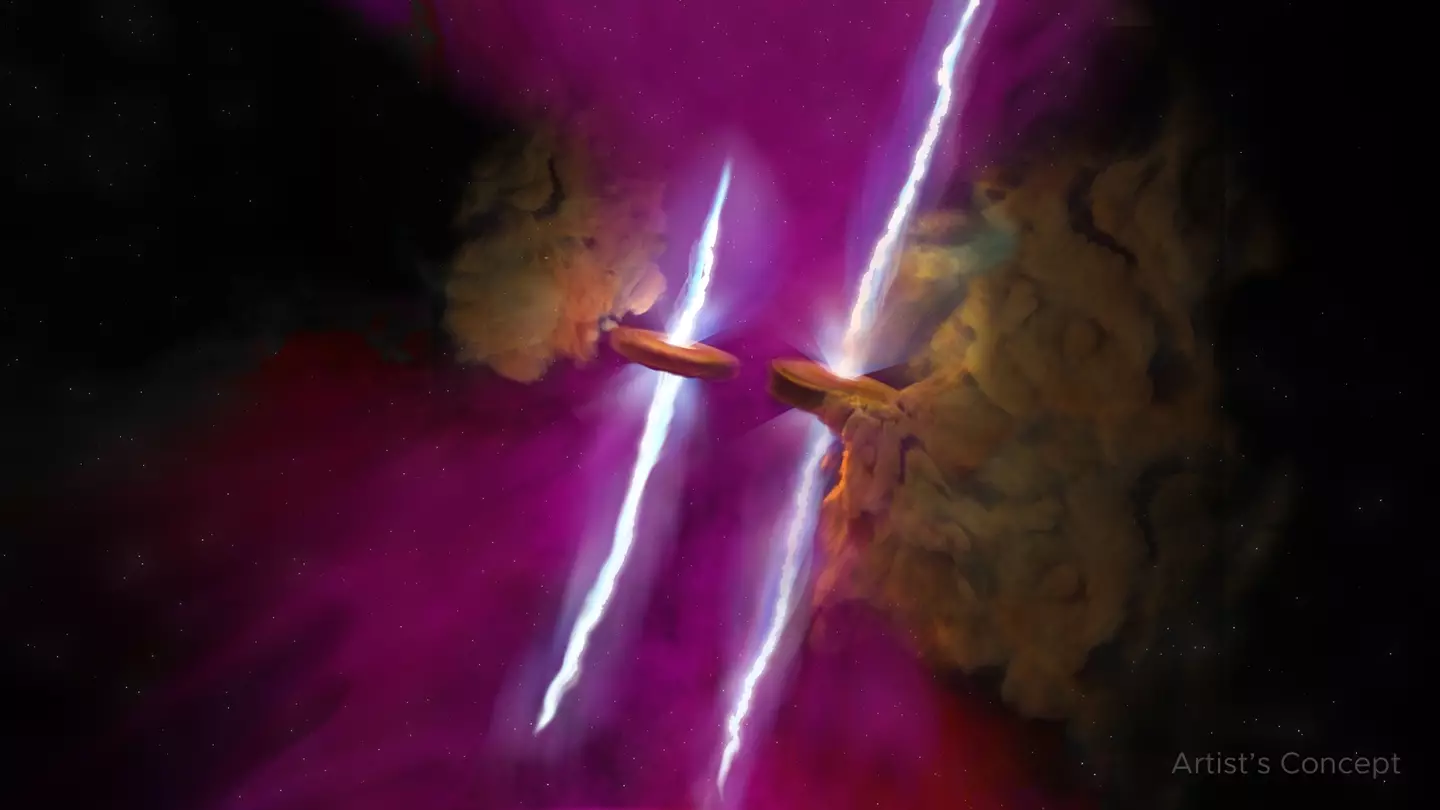Some of the world’s leading space scientists were left with their jaws on their floor after a recent discovery by the James Webb Space Telescope.
And the find was made even more remarkable given it is a spot in the cosmos that has been studied by astronomers for decades.
Since being launched in to deep space on Christmas Day 2021, the James Webb Space Telescope – known as Webb or JWST to make life easier – has been sending images back to Earth of the remarkable things found throughout the universe.
And as humanity’s leading instrument in space exploration, it is already making discoveries from close to the beginning of time that feels like the stuff of science fiction yet is very much real.
Now, managed by NASA’s Jet Propulsion Laboratory, Webb’s Mid-Infrared Instrument (MIRI) – which has a camera and a spectrograph – has revealed something brand new surrounding a star that we’ve been studying from back home for decades.
CGI of the James Webb Space Telescope floating through space (JPL / NASA)
And it’s surprised scientists, given that the region has been studied since the 1970s with at least five telescopes.
But the power of Webb and its unprecedented resolution and specialised instruments have revealed something previously unseen.
And the find? That one star is in fact two.
But that’s not all, with the twin stars also having matching jets of gas streaming in to space from both their north and south poles.
“Our jaws dropped,” said astronomer Mary Barsony, lead author of a new paper describing the results.

Concept art of the stunning find by the James Webb Space Telescope (U.S. NSF / NSF NRAO / B. Saxton)
“After studying this source for decades, we thought we knew it pretty well. But without MIRI we would not have known this was two stars or that these jets existed.
“That’s really astonishing. It’s like having brand new eyes.”
And the discovery continues, with further observations by the Atacama Large Millimeter Array – which is a group of more than 60 radio antennas in Chile – finding disks of dust and gas encircle both stars.
Based on the stars’ age, it’s possible that planets are forming in those disks.
“The power of these two telescopes together is really incredible,” said Mike Ressler, project scientist for MIRI at NASA’s Jet Propulsion Laboratory and co-author of the new study.
“If we hadn’t seen that these were two stars, the ALMA results might have just looked like a single disk with a gap in the middle.
“Instead, we have new data about two stars that are clearly at a critical point in their lives, when the processes that formed them are petering out.”

Dr. Thomas Hughes is a UK-based scientist and science communicator who makes complex topics accessible to readers. His articles explore breakthroughs in various scientific disciplines, from space exploration to cutting-edge research.








